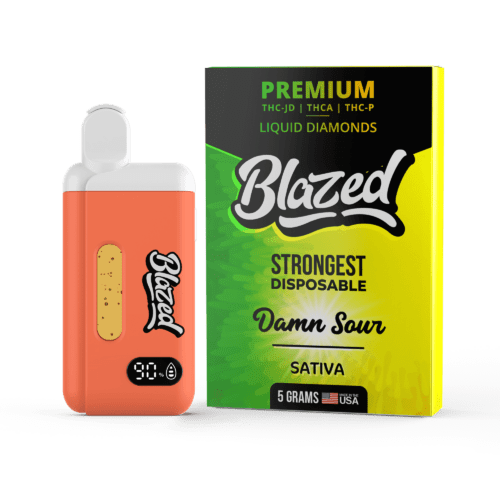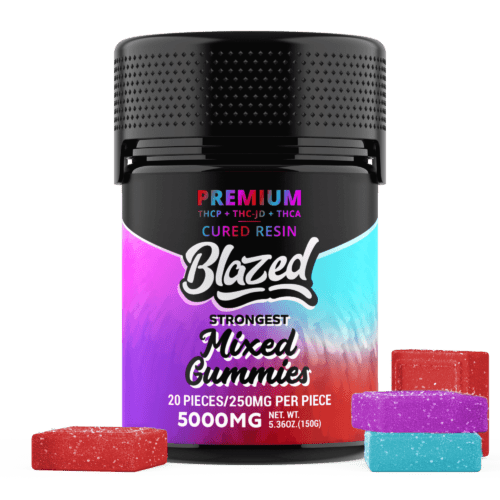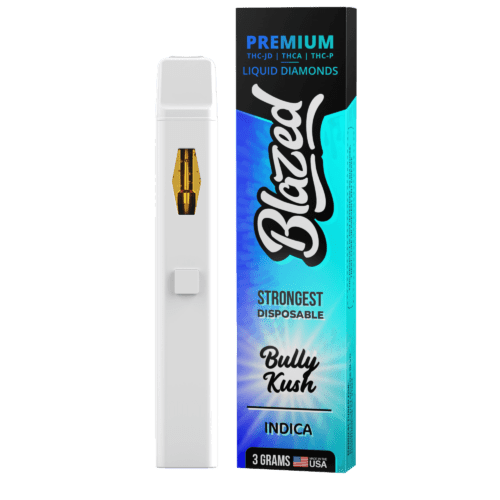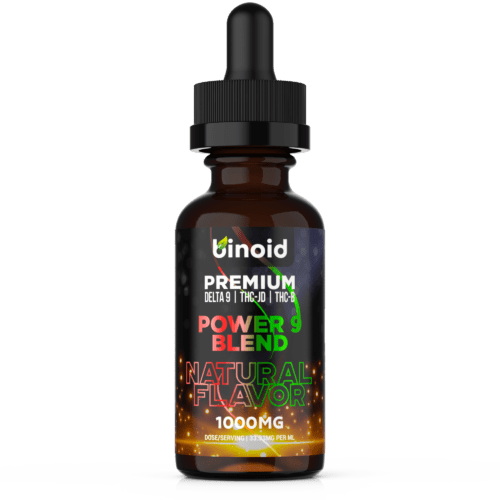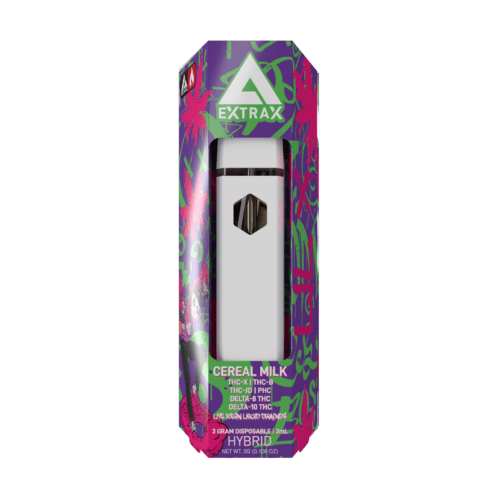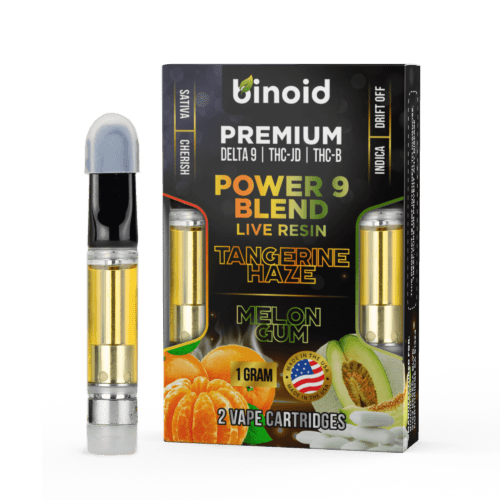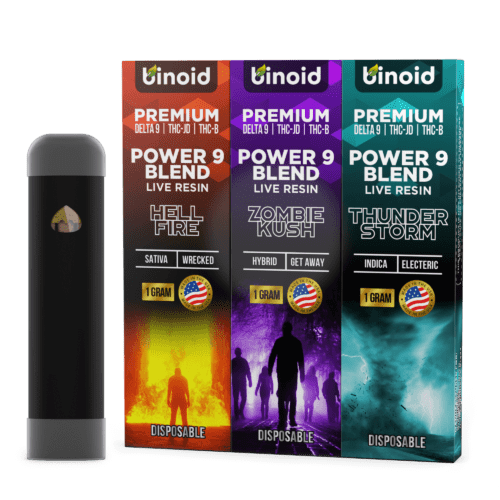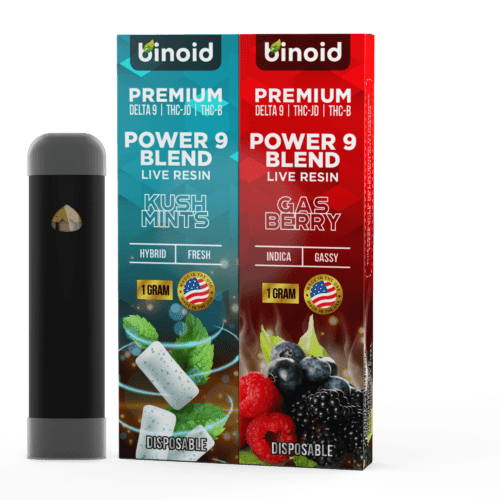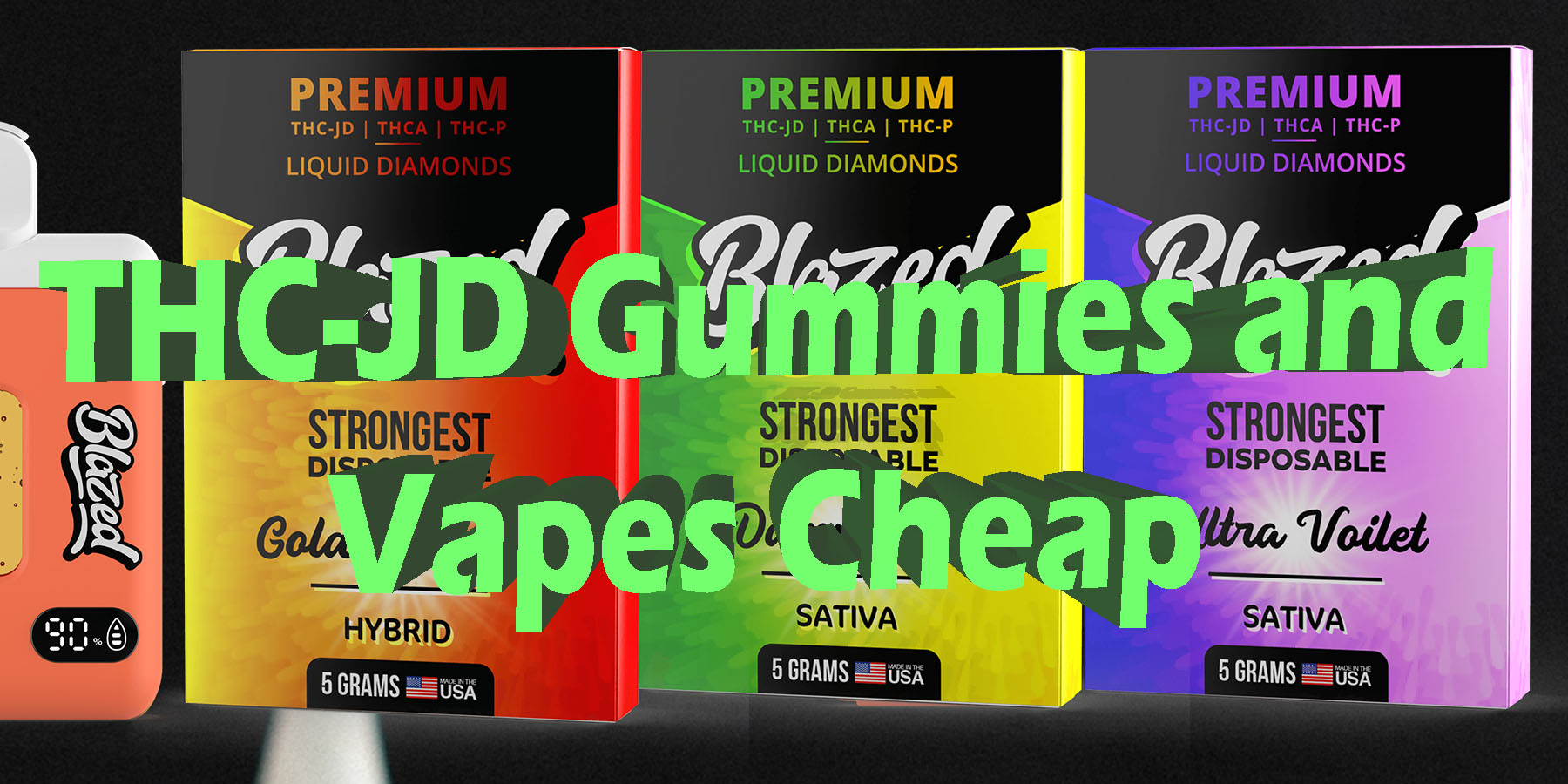
THC-JD Vapes and Gummies Cheap
The ever-evolving cannabinoid scene continuously introduces novel compounds, and THC-JD has certainly captured attention within that wave, particularly among those seeking high-potency options. As a cannabinoid marketed with an exceptionally long side chain, it draws interest from seasoned explorers seeking potentially powerful and unique experiences.
But with such compounds often come questions of cost and accessibility. If you’re venturing into the world of THC-JD and aiming to do so affordably, careful navigation and informed choices are essential. Let’s investigate the landscape for sourcing THC-JD cheaply, prioritizing crucial quality verification and awareness of the market factors involved.
To Buy THC-JD Products Click Here
Recommended products
What is THC-JD?
Tetrahydrocannabioctyl (THC-JD), as it’s known in the consumer market, is identified as a homologue of Delta 9 THC, notable for its distinct chemical structure featuring a purported eight-carbon (octyl) alkyl side chain. This structural characteristic differentiates it from more common THC isomers like Delta 9 THC (five carbons) or even potent homologues like THC-H (six carbons) and THC-P (seven carbons). Based on established cannabinoid science, the length of this side chain is a key factor influencing interaction with the body’s CB1 receptors, with longer chains generally suggesting stronger binding affinity. It’s this theoretical basis derived from its claimed octyl structure that underpins the market reputation of THC-JD for possessing significant psychoactive potency.
The historical context for compounds related to THC-JD includes early work identifying related cannabinoid structures in 1941. Further research into cannabinoids with varying side chain lengths, including work by Dr. Raphael Mechoulam’s team in 1976 and pharmacological studies on octyl cannabinoids in 1980, contributed foundational knowledge. Despite this background concerning related structures, the specific compound actively marketed today as THC-JD saw renewed interest and market emergence around 2020. This coincided with advancements in laboratory techniques allowing for the potential synthesis or isolation of cannabinoids with specific extended side chains, often utilizing precursors derived from legally cultivated hemp, such as CBD.
While marketed by some as naturally occurring in trace amounts, credible, independent scientific verification of tetrahydrocannabioctyl’s presence in significant or even reliably detectable levels within the cannabis plant remains limited compared to other phytocannabinoids. This suggests that the THC-JD available commercially is predominantly produced via laboratory synthesis or complex conversions starting from more abundant hemp cannabinoids. This production method allows THC-JD products to enter the market channels associated with hemp derivatives, separate from state-regulated marijuana systems, but also underscores the importance of understanding purification and testing for final product quality.
Legally, THC-JD occupies a complex space within the framework of hemp-derived cannabinoids. Under the 2018 U.S. Farm Bill, hemp and its derivatives are federally legal provided they contain no more than 0.3% Delta 9 THC by dry weight. Products labeled as THC-JD derived from hemp aim to meet this requirement. However, due to its intoxicating nature and production methods often involving chemical synthesis, its precise federal standing can be subject to interpretation and potential regulatory scrutiny under different federal acts or future guidance. Critically, state laws vary dramatically, with many states enacting specific restrictions or bans on intoxicating hemp-derived cannabinoids, potentially including tetrahydrocannabioctyl. Therefore, consumers must diligently verify the current regulations in their specific state and locality regarding the legality of purchasing and possessing THC-JD products.
Recommended products
Why Even Consider Purchasing THC-JD?
THC-JD’s market reputation for significant potency and unique structure are key factors driving curiosity. For individuals considering tetrahydrocannabioctyl, particularly those seeking specific types of potent experiences, several compelling attributes contribute to its appeal in the current market:
-
Marketed High Potency: The principal allure of THC-JD stems from its market reputation for delivering psychoactive effects potentially even stronger than THC-P, attributed to its purported eight-carbon side chain. This appeals primarily to highly experienced users with considerable tolerance seeking profound levels of intensity in euphoria, relaxation, or perceptual shifts.
-
Novelty of an Octyl Cannabinoid: THC-JD’s distinction lies in its marketed eight-carbon side chain, setting it apart structurally from other common THC homologues. For dedicated enthusiasts interested in firsthand exploration of how different molecular structures influence subjective experience, trying THC-JD offers a chance to engage with a compound representing the longer end of the alkyl side chain spectrum currently discussed in the market.
-
Potential for Unique Intense Qualities: Separate from sheer potency claims, some anecdotal reports describe the THC-JD experience as possessing distinct characteristics. Users occasionally mention uniquely enveloping bliss, specific types of powerful body sensations, or a different quality to the psychoactive journey compared to other potent compounds, motivating exploration by those seeking novel states.
-
Potent Enhancement Capability: Because of its marketed strength, THC-JD typically functions as a trace additive in cannabinoid formulations. Some experienced users specifically look for products containing THC-JD believing its inclusion provides a dramatic amplification of the overall intensity and perhaps duration of effects delivered by the other cannabinoids in the mix, aiming for a maximal impact from available blended products.
-
Exploration of Cannabinoid Frontiers: For individuals mapping the effects of the most powerful cannabinoids available (often derived from hemp precursors), THC-JD represents a significant data point at the upper end of the marketed potency spectrum. Its exploration fits into a broader interest in understanding and comparing the range of experiences these novel molecules might offer.
How to Choose Cheaper THC-JD
Selecting products labeled as THC-JD, especially when aiming for lower prices, requires a discerning approach focused on verifying quality and safety amidst a market known for novel compounds with varying levels of scientific validation. Finding true value involves meticulous scrutiny that goes well beyond the cost. If considering cheaper THC-JD options (after ensuring alignment with applicable local regulations), focusing on these standard factors for novel cannabinoids is absolutely critical:
-
Uncompromising Certificate of Analysis (COA) Verification: This is the single most vital step for any novel cannabinoid. Insist on viewing recent, comprehensive, batch-specific COAs from highly reputable, accredited third-party labs before any consideration. These must be examined with extreme care to confirm:
-
Accurate THC-JD Potency (or Attempted Quantification): Precise quantification of the claimed THC-JD (likely trace amounts, mg/serving or percentage), acknowledging potential analytical challenges for novel compounds.
-
Full Cannabinoid Profile: Identification of all other cannabinoids present (base compounds like D8/HHC, etc.) and strict Delta 9 THC compliance (<0.3% for hemp products).
-
Critical Purity Screening: Explicit verification of testing for residual solvents, heavy metal catalysts (if hydrogenation involved in precursors), pesticides, and microbials. Comprehensive purity data is essential.
-
-
Impeccable Brand Reputation and Full Transparency: Given the nature of potent novel cannabinoids, only ever consider THC-JD from the most established, transparent, and demonstrably reputable brands operating in the alternative cannabinoid space. Deeply investigate their manufacturing standards, safety testing protocols, company history, and independent customer reviews focusing on safety and consistency for potent products. Avoid unknown, new, or opaque brands entirely, particularly those offering unusually low prices without robust verification.
-
Cost Per Milligram of Verified/Claimed THC-JD: To compare potentially trustworthy options, calculate value based strictly on the amount of lab-verified (or claimed) THC-JD ($ Total Price ÷ Total mg/mcg of THC-JD from COA). This provides the true cost basis for the target potent compound within its blend.
-
Extreme Dosing Caution and Realistic Assessment: Treat any product labeled THC-JD with maximum respect for its marketed potency. When evaluating price, consider usability – an extremely cheap product with an impractically high dose per unit is poor value and requires extreme diligence. Always start with a minuscule test dose (potentially microgram levels) and wait several hours before assessing effects.
-
Source Material and Production Transparency: Prefer brands that offer some clarity regarding the hemp source for precursor cannabinoids and the laboratory standards employed for synthesis and purification. While details are often limited, any verifiable information adds confidence, especially when considering more affordable options.
Choosing cheaper THC-JD responsibly means verifiable purity and potency information from a trustworthy manufacturer are paramount considerations, far outweighing the price itself.
Recommended products
What Types of THC-JD Products Can Someone Buy Cheap?
Since THC-JD is primarily available in the affordable market segment as a trace percentage additive within potent cannabinoid blends, this in turn reflects its marketed extreme strength and likely significant production cost. You see, finding “cheap” THC-JD typically involves seeking budget-friendly products where a minuscule, precisely measured amount of the compound labeled as THC-JD is used to dramatically intensify effects, such as:
-
Vape Cartridges: This is a primary format for delivering affordable, ultra-potent blends featuring purported THC-JD. Cartridges usually contain a base distillate (commonly cost-effective HHC or Delta 8 THC) mixed with a very small, specified percentage of claimed THC-JD. This blend aims to produce an exceptionally strong psychoactive experience; assessing value requires absolute insistence on comprehensive COAs verifying the claimed trace THC-JD content, D9 compliance, and critical purity from all potential synthesis residuals and contaminants. Hardware quality in cheaper carts and the standard considerations for vape safety also apply.
-
Disposable Vapes: Offering convenience, disposable vapes feature similar extremely potent blends containing trace amounts of purported THC-JD mixed with base cannabinoids like HHC or Delta 8. Many affordable versions are marketed online. Evaluation must prioritize verifiable COA data confirming the precise, minuscule claimed THC-JD dosage, overall purity, D9 levels, and brand trustworthiness, alongside device reliability (battery/atomizer). Secure storage and starting with the smallest possible puff are vital safety practices due to the extreme potency claims.
-
Wax Dabs (Concentrates): Affordable “THC-JD dabs” would consist of a standard hemp concentrate (e.g., HHC wax or Delta 8 distillate) infused with a trace quantity of purported THC-JD distillate. Aimed at highly tolerant, experienced dabbers seeking potentially unparalleled intensity, affordability relates to the base concentrate plus the THC-JD addition. Comprehensive COAs confirming the claimed THC-JD concentration per gram and demonstrating exceptional purity (free from all synthesis residuals and base concentrate contaminants) are non-negotiable prerequisites for consideration, coupled with extreme dosing caution.
-
Gummies: Representing the edible format, THC-JD gummies require the highest level of user vigilance. Affordable options contain exceptionally low doses per piece (likely microgram or low single-milligram levels), always blended with more substantial amounts of HHC or Delta 8. Value assessment relies on the cost per microgram/milligram of verified/claimed THC-JD across the package. Only consider exceptionally reputable brands with meticulous COAs confirming dosage accuracy and comprehensive purity. Starting with an absolute minimal fraction of a gummy and waiting many hours is critical for safety due to extreme claimed potency and edible pharmacokinetics; secure, child-proof storage is paramount.
-
Tinctures: Liquid tinctures offer a theoretical method for controlled microdosing of purported THC-JD, typically found affordably online as blends with a very low total concentration of THC-JD mixed with base cannabinoids in a carrier oil. Value depends on the total verified/claimed micrograms/milligrams of THC-JD per bottle versus the price. Prioritize trustworthy brands with unambiguous COAs confirming exact potency and full purity screening. Extreme caution with dropper measurement and awareness of potentially delayed onset are necessary.
Recommended products
Potentially Buying Certain THC-JD Products Cheap That Also Use Cannabis Concentrates
Exploring the theoretical possibility of combining purported THC-JD—a cannabinoid defined by extreme potency claims but lacking firm scientific validation—with premium natural cannabis concentrates like Live Resin or Live Rosin ventures into a highly specialized product concept where affordability is exceptionally unlikely. These high-quality concentrates are valued for capturing authentic, terpene-rich cannabis profiles via fresh-frozen extraction, offering a significant sensory upgrade over standard distillates typically used in THC-JD blends. While blending THC-JD with these could hypothetically yield products combining intense potency with superior flavor, the immense costs, technical hurdles, and amplified safety verification needs place such combinations far outside the realm of budget-friendly options.
Considering Live Resin, often extracted using solvents from uncured cannabis, its appeal lies in its vibrant terpene expression. An ultra-premium vape might theoretically involve adding trace amounts of purported THC-JD distillate to a genuine CBD or Delta 8 Live Resin base, aiming to marry intensity with rich flavor. However, the costs of quality Live Resin production plus the expense and critical safety verification required for THC-JD make this concept prohibitive for affordable lines. Products marketed cheaply as “THC-JD Live Resin” likely involve misrepresentation of the concentrate or dangerous compromises on purity testing for the THC-JD component, requiring extreme skepticism.
The combination with Live Rosin, the premium solventless extract prized for purity and flavor, faces even greater barriers to affordability and safe execution. Live Rosin’s meticulous, chemical-free production results in high costs. Blending this pristine natural extract with a potent, likely synthetic, legally complex, and scientifically unverified compound like THC-JD would demand extraordinary formulation and safety validation, feasible perhaps only in unregulated experimental contexts at extreme prices, if at all. Finding affordable, trustworthy versions is essentially inconceivable, and such claims should be dismissed as highly improbable and potentially hazardous.
Therefore, while conceptually interesting, marrying THC-JD’s marketed potency with the sensory quality of Live Resin or Live Rosin remains outside the practical sphere of affordable products. Market realities position such hypothetical blends as ultra-premium and high-risk. Consequently, individuals exploring budget-friendly options for products labeled THC-JD must realistically expect to find it, if verifiable at all, as a trace additive in blends based on standard, cost-effective distillates like Delta 8 or HHC, where the absolute focus must remain on attempting to verify purity and potency through rigorous testing from exceptionally reputable sources.
Recommended products
Potentially Buying THC-JD Products Cheap That May Also Combine One or More Cannabinoids
Given that THC-JD is marketed as an ultra-potent cannabinoid likely requiring complex synthesis, nearly all affordable products claiming its presence are intricate cannabinoid blends. These formulations, primarily found as vapes, gummies, dabs, and tinctures in the less regulated online hemp market, combine purported THC-JD with other cannabinoids to achieve marketable price points and highly potent effect profiles.
One conceivable strategy involves blending trace amounts of claimed THC-JD with non-intoxicating cannabinoids like CBD. In such hypothetical affordable vape or tincture blends, the inexpensive CBD might theoretically be included to slightly broaden the cannabinoid profile or with marketing claims of balancing effects, though the primary driver remains the THC-JD potency claim.
It is also possible, primarily in vape formulations marketed affordably, that THC-JD might be blended with mild potency psychoactive cannabinoids such as Delta 6 THC, Delta 10 THC, or THCV. The intention here would likely be to add specific uplifting, energetic, or uniquely nuanced characteristics (associated with D10/THCV/D6) to the extreme intensity attributed to the purported THC-JD, creating distinct experiential targets within the budget-friendly but high-risk potent vape segment.
More commonly, affordable products labeled with THC-JD feature blends with moderate potency cannabinoids, especially within vapes, gummies, and tinctures. Delta 8 THC very frequently serves as the cost-effective primary psychoactive base, combined with trace amounts of claimed THC-JD to dramatically escalate the overall strength far beyond Delta 8 alone, forming popular value options for users chasing extreme potency. Compliant Delta 9 THC (<0.3% from hemp) or THCA-derived Delta 9 might also be included in affordable THC-JD gummies or vapes to anchor the powerful effects attributed to THC-JD with familiar THC qualities.
Furthermore, targeting the absolute peak of psychoactive intensity within the affordable (but high-risk) market, manufacturers create potent cocktails, almost exclusively in vape and dab formulations, by blending purported THC-JD with other strong cannabinoids. It’s common to find affordable vapes combining claimed THC-JD with compounds like HHC. Seeking the most overwhelming effects possible, brands offer competitively priced vape blends layering claimed THC-JD with other potent analogues like THC-B, THC-H, or THC-P. These complex “super blends,” marketed aggressively online, promise extreme effects by stacking multiple potent synthetic or semi-synthetic compounds but carry profoundly amplified safety risks due to potential impurities, unknown synergistic effects, and extreme dosing challenges, demanding maximum user caution and skepticism regarding actual composition and testing.
So basically, recognizing the blended profiles via detailed COAs is absolutely critical when considering these potent, affordable THC-JD blends.
Recommended products
Where to Buy THC-JD Cheap
Sourcing products labeled as Tetrahydrocannabioctyl (THC-JD), particularly affordable options, involves navigating the most unregulated and high-risk channels of the cannabinoid market. Its questionable scientific basis, likely synthetic origin, extreme potency claims, and complex legal status severely limit legitimate availability, making safety verification the primary concern over price. Below is a breakdown of potential purchasing locations, viewed with necessary caution:
-
Licensed Suppliers/Specialty Stores: Finding THC-JD in physical retail hemp stores is exceptionally unlikely and legally challenging. Given its likely synthetic nature and extreme potency claims, THC-JD would almost certainly fall under state laws restricting or banning intoxicating hemp derivatives or synthetic cannabinoids in most jurisdictions. Verifying local legality is essential but likely prohibitive. Even if found, verifying the necessary purity and trace potency through reliable COAs is virtually impossible in this setting, making it an unsuitable channel.
-
Online Retailers: The vast majority of THC-JD products are found online, sold by brands like Binoid operating within the hemp-derived cannabinoid space. This channel typically offers the most competitive pricing due to direct-to-consumer models and intense market competition, along with the widest selection of THC-JD formulations. Critically, reputable online vendors provide access to Certificates of Analysis (COAs) – absolutely essential for THC-JD to verify its precise (and likely low) concentration, confirm Delta 9 compliance, and ensure purity from contaminants and potentially harmful synthesis byproducts. However, the online market demands extreme caution and rigorous vetting. Only purchase from highly reputable, well-established brands with strong track records for transparency and safety.
-
Online Wholesalers: Primarily serving businesses, online wholesalers deal in bulk cannabinoids. Direct consumer purchase of bulk compounds marketed as THC-JD carries immense risks regarding purity verification, identity confirmation, safe handling, legality, and accurate formulation, making it unsuitable.
Note: Sketchy head shops, flea markets, other marketplaces like eBay, Facebook Marketplace, or Craigslist – never seek THC-JD or similar ultra-potent, questionable compounds from these sources. The probability of receiving untested, dangerously impure, counterfeit, mislabeled, or illegal products is astronomical, making any perceived low price irrelevant compared to the severe potential harm.
Is Buying THC-JD Cheap Always Better?
When considering Tetrahydrocannabioctyl (THC-JD), a compound primarily characterized by extreme potency claims alongside significant scientific uncertainty and profound legal/safety questions, the standard consumer approach of seeking the cheapest option becomes fundamentally inappropriate and potentially hazardous. While affordability is always a factor, for THC-JD, the potential compromises inherent in achieving low prices directly impact those critical safety factors like chemical identity, purity, and dosage accuracy, making it clear that “cheap” is almost certainly not “better”, but rather introduces unacceptable risks.
The most significant concern with cheap products labeled THC-JD lies in unknown chemical identity and purity. Lacking confirmed natural occurrence and likely requiring complex synthesis, these products carry a high risk of containing incorrect molecules, unreacted starting materials, residual solvents, heavy metal catalysts, or entirely unknown hazardous byproducts generated during synthesis. Rigorous, specialized analytical testing is needed even to attempt identification and ensure purity from all potential contaminants. Such comprehensive testing is costly, meaning rock-bottom prices virtually guarantee its absence, exposing users to completely unknown chemical risks.
Accurate dosing concerns are amplified to an extreme with THC-JD due to its marketed potency potentially exceeding even THC-P. If claims hold any truth, effects could occur at vanishingly small microgram levels. Cheap products from unreliable sources with poor quality control present an immense danger of inaccurate labeling or inconsistent formulation, making safe, controlled dosing impossible and creating a severe risk of extreme adverse psychoactive reactions from accidental overdose. Verified potency from an exceptionally trustworthy source (if one could exist) is paramount.
The complex and likely unfavorable legal status further invalidates prioritizing cheapness. As a probable synthetic analogue with high psychoactivity, it likely falls outside federal hemp law interpretations and is banned under numerous state regulations. Cheap THC-JD products might be inexpensive precisely because they operate entirely outside legal and regulatory controls, carrying significant legal risks for buyers. Evaluating whether a cheaper product is “better” must include verifying its alignment with thoroughly researched local regulations.
Ultimately, given the profound lack of scientific validation for THC-JD’s identity and effects, the immense risks of dangerous impurities, the extreme hazard of inaccurate dosing, and its highly probable restricted or illegal status in most places, the pursuit of “cheap” THC-JD is fraught with peril. “Better” in this context can only mean prioritizing maximum achievable safety through hypothetical (and likely unattainable) verified purity, confirmed identity, accurate ultra-low dosing, and sourcing from an impossibly reputable manufacturer – critical factors fundamentally opposed to seeking the THC-JD lowest price.
Recommended products
The Importance of Properly Storing Cheaper THC-JD Products
Given the extreme potency attributed to THC-JD and the significant safety considerations surrounding its likely synthetic nature and questionable purity, implementing rigorous storage practices for any product labeled as containing THC-JD, regardless of its cost, is an absolute necessity for safety and responsible handling. Proper storage aims to maintain the product’s limited chemical integrity and prevent degradation, but more critically, it serves to prevent accidental ingestion or misuse at all costs, And so, protecting even affordable THC-JD finds requires the highest level of storage vigilance and security. Here’s guidance for common formats where THC-JD blends might appear:
-
Storing THC-JD Vape Cartridges: Keep vape cartridges containing purported THC-JD blends stored upright in a cool, dark, highly secure location (e.g., locked container). Upright storage minimizes leaks; avoiding heat and light protects the potent oil blend. Use protective caps. Crucially, label these cartridges with explicit, bold warnings regarding extreme potency and ensure they are completely inaccessible to unintended users.
-
Storing THC-JD Disposable Vapes: Store THC-JD disposable vapes upright if possible, also in a cool, dark, highly secure, locked location. Protect the device from temperature extremes and physical damage. Prominent warning labels indicating extreme potency are vital. Secure storage completely out of reach is paramount due to the ready-to-use format and potential for severe adverse effects from accidental use.
-
Storing THC-JD Concentrates (Infused Dabs): For highly potent concentrates labeled as containing THC-JD, use small, airtight glass or silicone containers. Store these tightly sealed in a cool, dark place. If refrigeration is used, always allow the container to reach room temperature before opening. Explicit warning labeling and storage in a securely locked, inaccessible location are critical safety measures.
-
Storing THC-JD Gummies: THC-JD gummies demand maximum storage security vigilance. Keep them exclusively in their original child-resistant packaging, or immediately transfer to an equivalent opaque, airtight, clearly labeled, child-proof container that is then securely locked away. Store the container in a cool, dark, dry place. Preventing access by children, pets, or any unsuspecting individual is the absolute top priority due to extreme risks from accidental ingestion. Strong warning labels are essential.
-
Storing THC-JD Tinctures: Store THC-JD blended tincture bottles upright with the cap securely tightened in a cool, dark location. The bottle must be unmistakably labeled regarding its purported THC-JD content and extreme potency per dose. Secure storage (e.g., locked cabinet, entirely separate from all other items) is strongly advised to prevent catastrophic mix-ups or accidental ingestion.
These diligent storage practices are non-negotiable, because they help maintain the product’s intended quality and potency while playing a vital role in ensuring safe, responsible consumption by preventing accidental exposure and ensuring clear identification of these powerful cannabinoid formulations.
Experience Affordable and Effective THC-JD Cheap Today!
Your exploration into the unique potential of THC-JD can proceed with clarity and purpose. Armed with an understanding of the market landscape and quality indicators, you are equipped to seek out products that align with both your interest in potent effects and your desire for affordability.
Focus your search on reputable sources that provide transparent information and verifiable testing, ensuring the choices you make prioritize established quality benchmarks. Actively pursue the THC-JD options that meet your criteria for value and effectiveness. The pathway to potentially discovering this potent cannabinoid experience affordably and responsibly is ready for you to navigate starting now.

